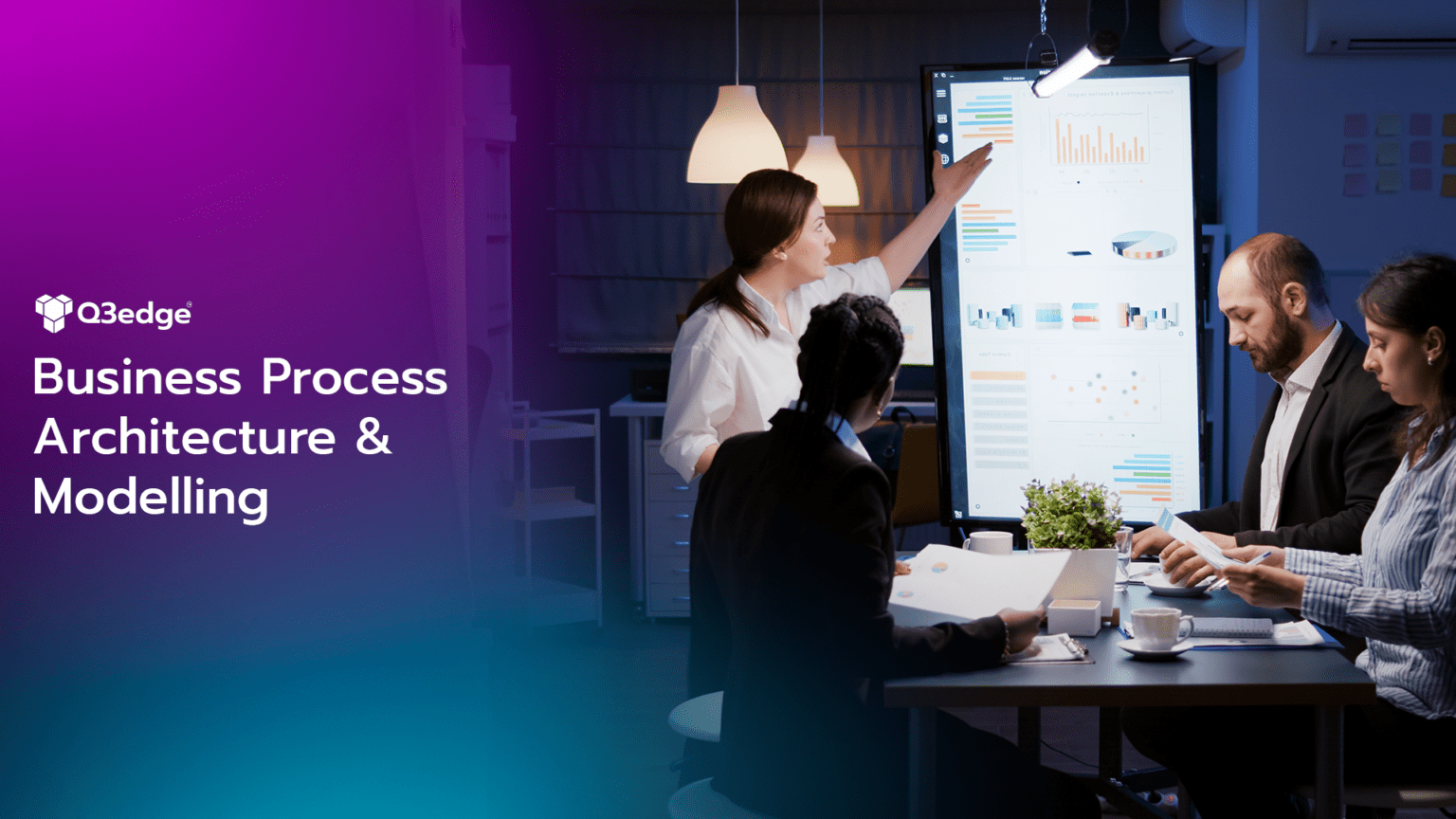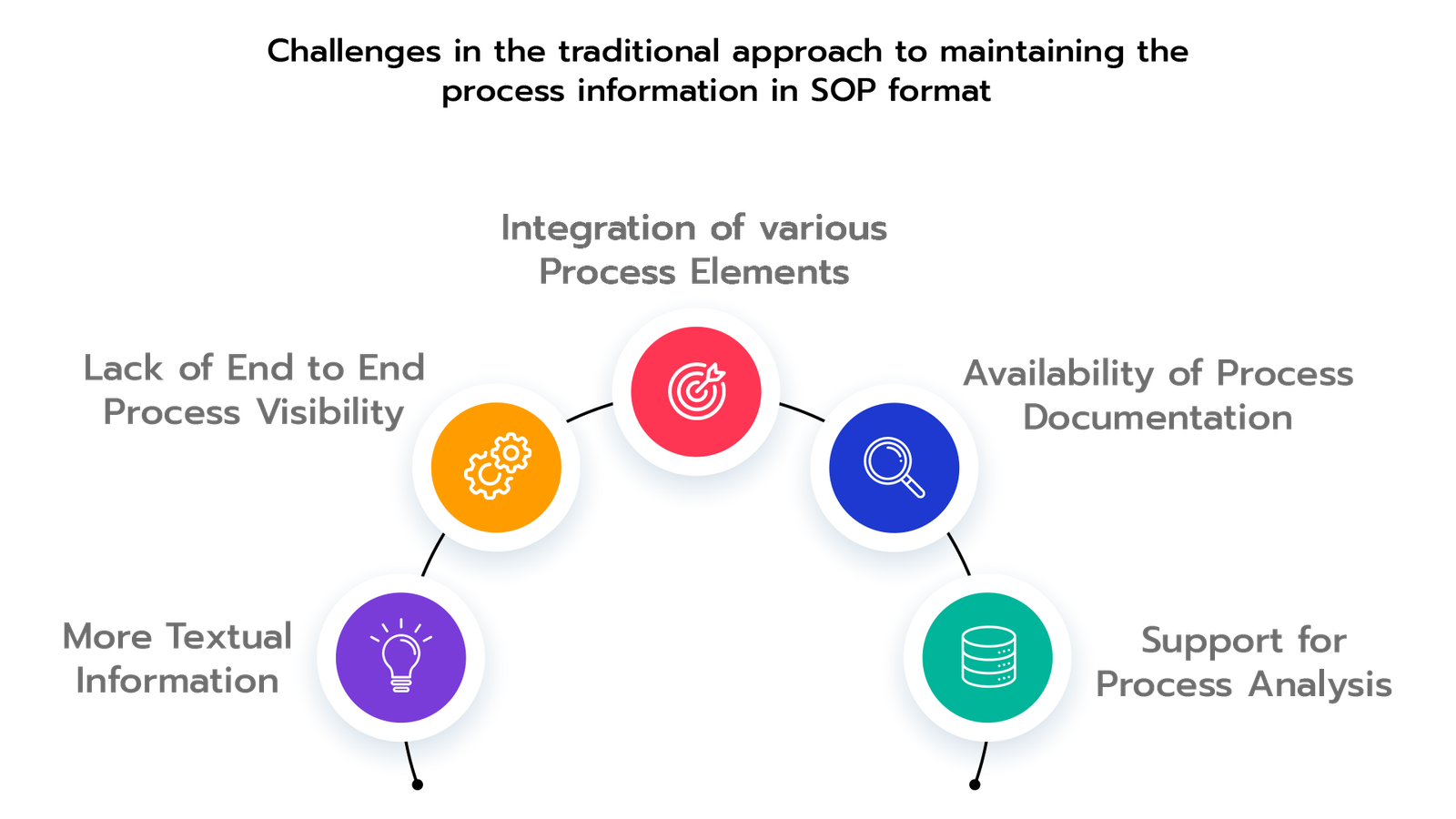Business Process Architecture and Modelling is a hierarchical model that explains the relationship among various elements of the business to achieve business objectives. An organization is a complex system where multiple elements work at the same time but in different directions.
These elements are business vision, purpose, and mission, business strategies, business goals, business processes, people technologies, products, and services. None of these is sufficient in itself to deliver the value. They all need to connect together to ensure that the work moves as a choreography.
To run these systems, organization leads by the various subject matter experts who take care of a specific element like people, process, technology etc. They look at the organization with their own experience, knowledge, skills, and behavioral skills. Indeed, they all are different and hence to have a choreography, the organization requires someone who can connect all of them together, ensures they all work in rhythm.
Business Process Architecture and Modelling is an integrated model that links all of these elements together and provides different magnifiers to each stakeholder to view, analyse and evaluate organization as per their requirements.
A Business Process Architecture and Modelling explains the inter-relationship among business processes management and integrates with business objectives, strategies, IT and People with capabilities. Business Process architecture clarifies how an organization creates, accumulate and deliver values to its customers. In addition, it is such a powerful tool that if it can unhide all challenges, constraints, risks in the organization. It is a management tool for a strategy to execution.
Business Process Architecture and modelling is a top-down approach that provides a birds-eye view of an organization. But it does not limit itself only to the macro pictures. As explained, it is an integrated hierarchical model that can be expended till the last activity in the organization.
It is also known as “Process Landscape”. There are many industry-specific frameworks are available that can provide a quick reference model to the management to start business process architecture and modelling for their organization. For ex: eTOM is a reference model for the Telecom industry, CMMI reference model for Software and System industry, SCOR for Supply Chain Management, APQC Frameworks for Automotive, Airlines etc.
Business Process Architecture and Modelling

There are various approaches available to design business process architecture. Here, we are going to discuss a few of the architecture design models:
1. Goal-Based Approach
In Goal-Based Approach, the business architecture is designed to establish essentials of business goals and relationships in between business goals. This approach identifies all critical business process architecture and modelling which are essential to achieve business goals.
In this approach, business goals are mapped with the critical business process Key Process Indicators (KPI’s) and further assigned KPI’s within the business processes. This approach gives an advantage as it helps to find the critical business process architecture and modelling over the other available in the organization. Hoshin Kanri X Matrix is one of the good tools to plan and design goal-based approach.
2. Reference Model-Based Approach:
There are various industry specific as well as management-related reference models are available. Some of these are APQC process frameworks for specific industries, Malcolm Baldridge Industry-specific Frameworks (like Healthcare, Education etc), European Framework for Quality Management System (EFQM), or standards like ISO 27001 for Information Security etc. These reference models can be re-used and adapted by the organization, as per their requirement to design their business process architecture and Modelling .
Many reference-model based approaches are organized functionally. The major benefit of reference model-based approaches is that much time can be saved by starting from an existing model.
3. Customer Journey Approach
A customer journey map explains how business values are experienced by customers. It connects all the phases starting from customer awareness to customer post-sales service. All these phases are supported by internal business processes . Each process is owned by process owners who measures the process performance as per the process KPIs.
This approach helps the organization to identify those critical business processes architecture and modelling which interact with the customers. This enables an organization to analyze and evaluate the “touch points” which are served by business processes and require immediate attention. Along with internal business processes, people and technologies are mapped within the business architecture to find the “Value” to the customer.
4. Function-Based Approach
A function-based approach is a hierarchy of functions that represents the decomposition of business functions into more detailed business functions. These business functions are also known as business capabilities. For ex: “Production”, or “Procurement” are two of the business functions aka capabilities. This approach is comparatively simpler as an organization understands its capabilities.
It helps to identify “What” are the capabilities of an organization and map it with the business processes. For Ex: a Production Function can be decomposed into: Production Planning, Material Planning and Receipt of Goods, Production Execution, Finished Goods Delivery. Similarly, Production Planning can be further decomposed into: Order Creation, Block Raw Material, Plan Batch Size etc.
The advantage of this approach is to find the End to End value chain associated with a function and assign a process mining owner along with the process measurement system.
5. Risk and Compliance Approach
Risks and Compliance’s are two of the critical areas which every organization is more concerned about. Most of the industries are completely driven as per industry specific compliance’s. For ex: Healthcare, Aviation, Insurance etc. Organizations in all these industries, most of the time, have to keep compliance’s as much more critical objectives over revenue as they can afford with a marginal decline in revenue % but can not afford any noncompliance issues.
In most of the organizations, there is a risk and governance committee that constantly looks for any risk or compliance change. Once they identify any need, they need to immediately need to do an impact/change assessment to find how it would impact the business. Organize business architecture to keep risks and compliance in the center, helps an organization to keep track of all those business processes which require comparatively frequent reviews.
There are few more models to design business architecture like Object-Based Approach, Action-Based Approach etc.
Here, what is more, important to understand that business process architecture and Modellingapproach, if it is not planned correctly or appropriately, it will certainly impact business and it’s stability within the organization. You can compare this scenario with a situation where you would like to build a house but without an architecture.
So, end of the day, it will be extremely difficult to build a stabilizing the structure as well as you will never know how much is built and how good it is.
Organizations that adopt business process architecture and modelling indeed, will have competitive advantage over other companies that lack this capability. You can measure the benefits as follows:
Tangible Benefits
- Know how much processes are adding value in the organization as well as how many business processes are redundant and adding no values. So the investment of non value-added processes can be saved and shift on more value-added business processes and modlling
- Know what is the speed of your organization delivery, where are the bottlenecks, how many exceptions are available in the business value chain. IT helps to identify all those blind spots which become a part of the organization, knowingly or unknowingly.
- Know what is the quality of product or service are getting delivered and how can these be improved.“Better, Faster, Cheaper“ can only be possible if business process architecture is well planned and implemented in the organization.
Business process mapping/modeling

Business process mapping/modeling is an approach to create a visual representation of the process steps. The process is a logical sequence of activities to achieve a specific business objective. But a Process is not merely the set of activities. It is a limited definition/ understanding of a process. The process is the way a business achieves it’s business objectives.
The process includes many elements and tie them all together in a logical sequence of activities. These basic elements of any processes are: Input, Output, Roles, Responsibilities, Application Systems, Information, Business rules, Process Rules, Interface to Other Processes.
In addition to the basic elements, there are various other elements that an organization can maintain in a process to analyze and evaluate business processes for re-engineering and improvements. Some of these elements are: Risks and Compliance Information, Information Security Information, Reviews, Audits &Assessment Information, Critical to Success, Measure of Success(MOS), Key Process Indicators, etc.
The detailing of information is primarily dependent of the purpose/objective of the organization. A process modeling approach helps an organization to map all these elements in a process which is much easier to understand, read, and analyze.
As part of the business architecture, the mapping/modeling conventions are defined to confirm the standardization of business process architecture and modelling mapping/modeling. In its traditional approach, many organizations still maintain it’s process information in the form of “Standard Operating Procedure”.
A word or PDF document and in some organization, they even use Excel or PowerPoint method as well. Maintaining information in these formats is not wrong but in the current scenario where digitization is a crucial requirement and almost all organizations have either started or going to start their digital journey, these SOP’s do not provide much support. There are a few challenges in the traditional approach to maintaining the process information in SOP
format:




